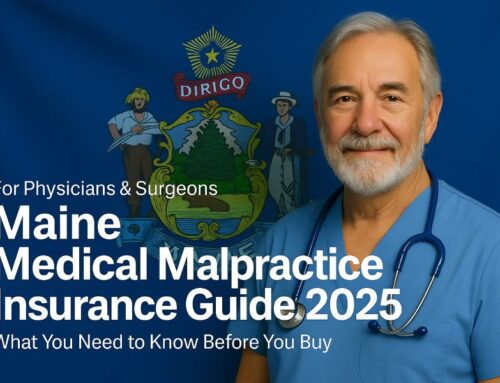The waiting room is full on a Monday morning at a rural Midwest practice of a primary care physician with a specialty in geriatric medicine. It is the only independent clinic in a small town located 40 miles from the nearest hospital, so residents of all ages depend on the doctor and her staff for a wide range of health services. With its geriatric medicine component, the practice also has a large population of Medicare-age patients.
The doctor has a full schedule most days, but she typically spends more time than the 10 minutes per patient limit set by the volume-based reimbursement model of the region’s largest health insurance carrier. Although she could earn more by seeing a greater number of patients per day, she refuses to do so. Building a trusted relationship with her patients, spending more time with elderly Medicare patients, and delivering high quality of personalized care to all are more important to her.
But now, with Medicare reimbursement rates also decreasing in 2023, this doctor is concerned for the financial health of her practice – and for everyone in her community if she were forced to close her office and work for the healthcare system 40 miles away.
The private practice: A “good neighbor” to the community
This kind of scenario is playing out in private practices across the country as independent physicians and surgeons continue to receive lower payer reimbursement amounts than their counterparts in hospital-owned clinics. Unless reforms are made to Medicare and current volume-based reimbursement models, the private practice may soon become a thing of the past, depriving rural and underserved communities of essential healthcare they desperately need.
The private medical practice is vital for providing easily accessible healthcare to residents of remote or rural areas. Even in urban areas served by large healthcare systems, private practices give consumers more choice in finding the right doctor and healthcare services for their conditions, lifestyle, and financial situation. As a “good neighbor” to the community, independent physicians can practice medicine with a focus on the quality of care, rather than adhering to a hospital’s volume-based mandates designed to increase profits. Regardless of location, a private practice can provide more personalized, outcomes-driven care to patients. Plus, unlike most large health systems, they also support community improvements as a business by paying local property taxes, for example.
Private practice vs. hospital clinic: The reimbursement gap
Unfortunately, the financial viability of the private practice is threatened as the payer reimbursement gap grows wider between independent physicians and those employed by hospitals. Looking at Medicare, recent research shows that independent doctors and surgeons are reimbursed at a significantly lower rate. According to a Health Serves Research study of Medicare physician reimbursement, doctors who work for a hospital or healthcare system clinic earned $114,000 more in reimbursement payments than physicians in private practice. Medical specialists earned 74% more, and surgeons 224% more than their independent counterparts.
The Medicare reimbursement gap is increasing further in 2023. Although the American Medical Association (AMA) and other physician advocacy organizations fought to stop the proposed Medicare fee schedule updates, the 2023 Medicare Physicians Fee Schedule lowers the conversion factor to $33.0607, which is a 4.48% cut compared to 2022.
Quantity vs. quality: Volume-based reimbursement
A study in the JAMA Health Forum revealed that volume-based reimbursement was the norm for 80% of primary care physicians and more than 90% of specialists. The volume-based reimbursement model is driven more by profitability for a healthcare system or payer, and less by the value of patient care. Also known as fee-for-service, some payers reimburse physicians based on the volume of patients they see and the number of healthcare services or procedures they provide. Therefore, physicians in private practice are pressured to increase their patient population and spend less time per patient in order to meet the guidelines for full reimbursement.
Doctors who practice in hospitals or integrated healthcare system clinics are most often mandated to adopt the volume-based model, but some payers reimburse independent physicians in the same way. Private practice physicians still have the advantage and choice to provide personalized care to each patient with as much time as it takes during an appointment or procedure. Quality of care overrides quantity of care, but independent physicians pay the price quite literally by being reimbursed less than their hospital colleagues if they choose not to comply fully with the volume-based model.
The call for reimbursement reforms
Private practices are struggling under the weight of financial strain due in part by low reimbursement policies, often leaving physicians little choice but to be acquired by a healthcare system or close down. According to a 2020 American Medical Association (AMA) survey on physician practices, 49.1% of physicians surveyed were working in private practices, a decrease from 60.1% in 2012. Clearly, reimbursement reforms are needed now to halt the potential demise of the private practice.
The good news is that the AMA and other physician advocacy groups are developing policies and legislation to bring about positive change. For example, at the 2022 Private Practice Physicians Section (PPPS) Interim Meeting, the AMA enacted a policy resolution to promote minimal sustainable reimbursement for community practices in 2023. The AMA will gather data from small-to-medium sized private practices across the U.S. to determine a policy for appropriate minimal levels of reimbursement. The policy will also encourage “good faith negotiations” between insurers and private practice physicians, as well as develop model legislation that states and communities can adapt to petition for reimbursement rate increases.
Physician advocacy policies like this will be essential to keeping the private practice a viable and accessible source of quality healthcare for millions of Americans in 2023 and beyond. Read more information on the Private Practice Physicians Section (PPPS) of the AMA.
At MEDPLI, helping private practice physicians is what we do – we’ve helped over 1000 doctors launch private practices of their own with our decades of medical malpractice insurance expertise. Thinking of starting your own private practice or have questions about your existing policy? We’d love to talk. Give us call at 1-800-969-1339 or email our small team of independent brokers for a response within 24 business hours.





